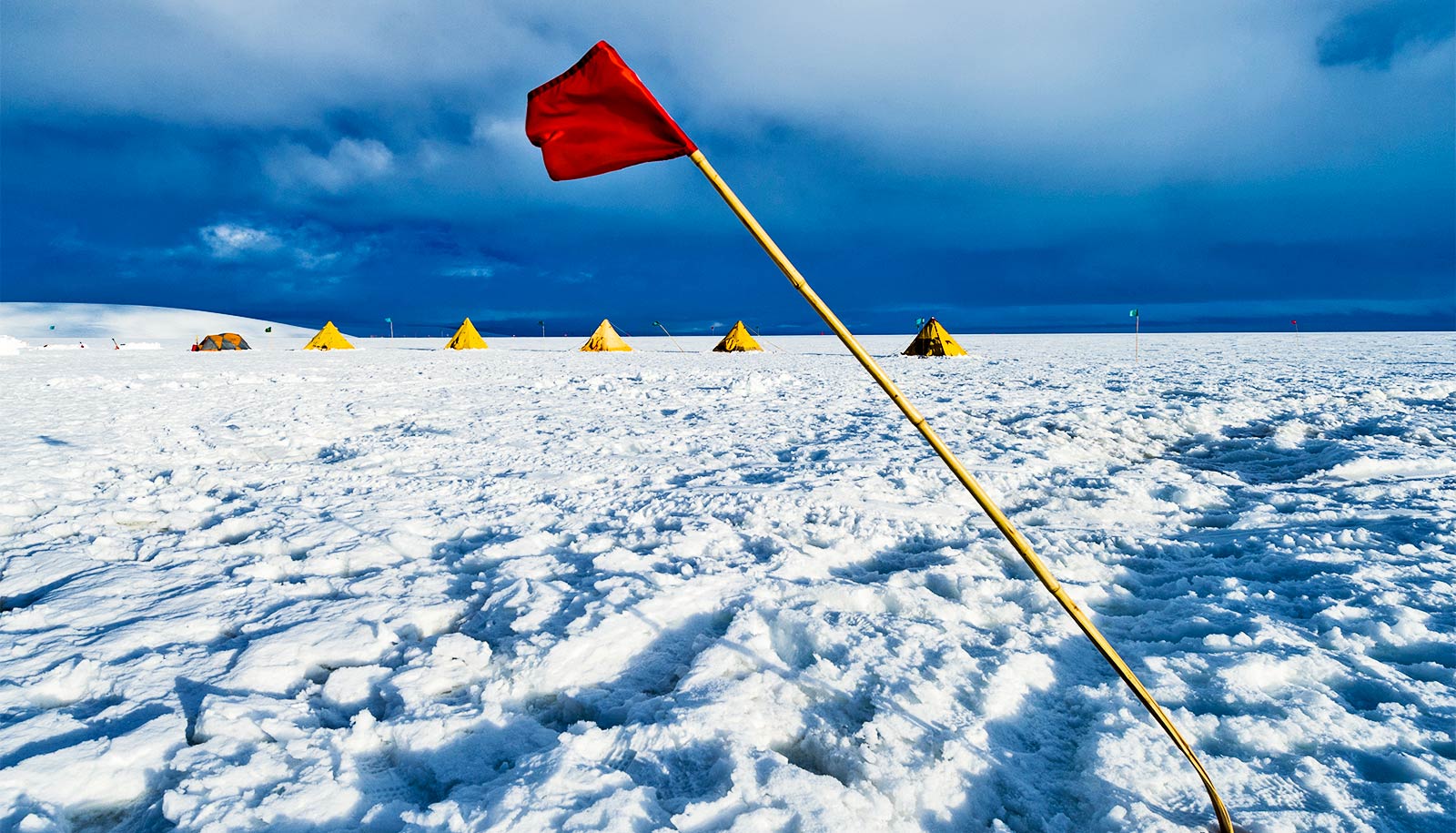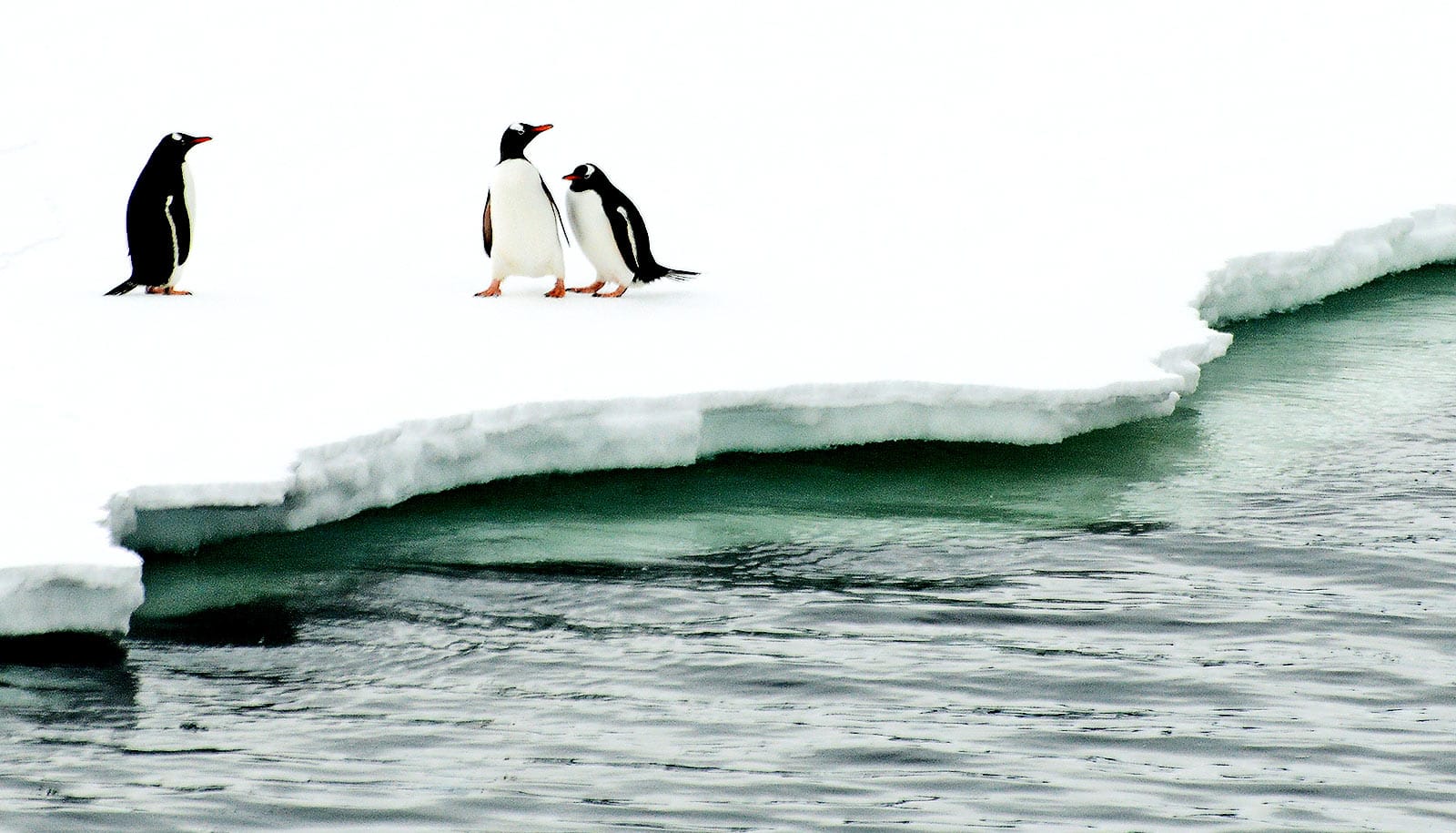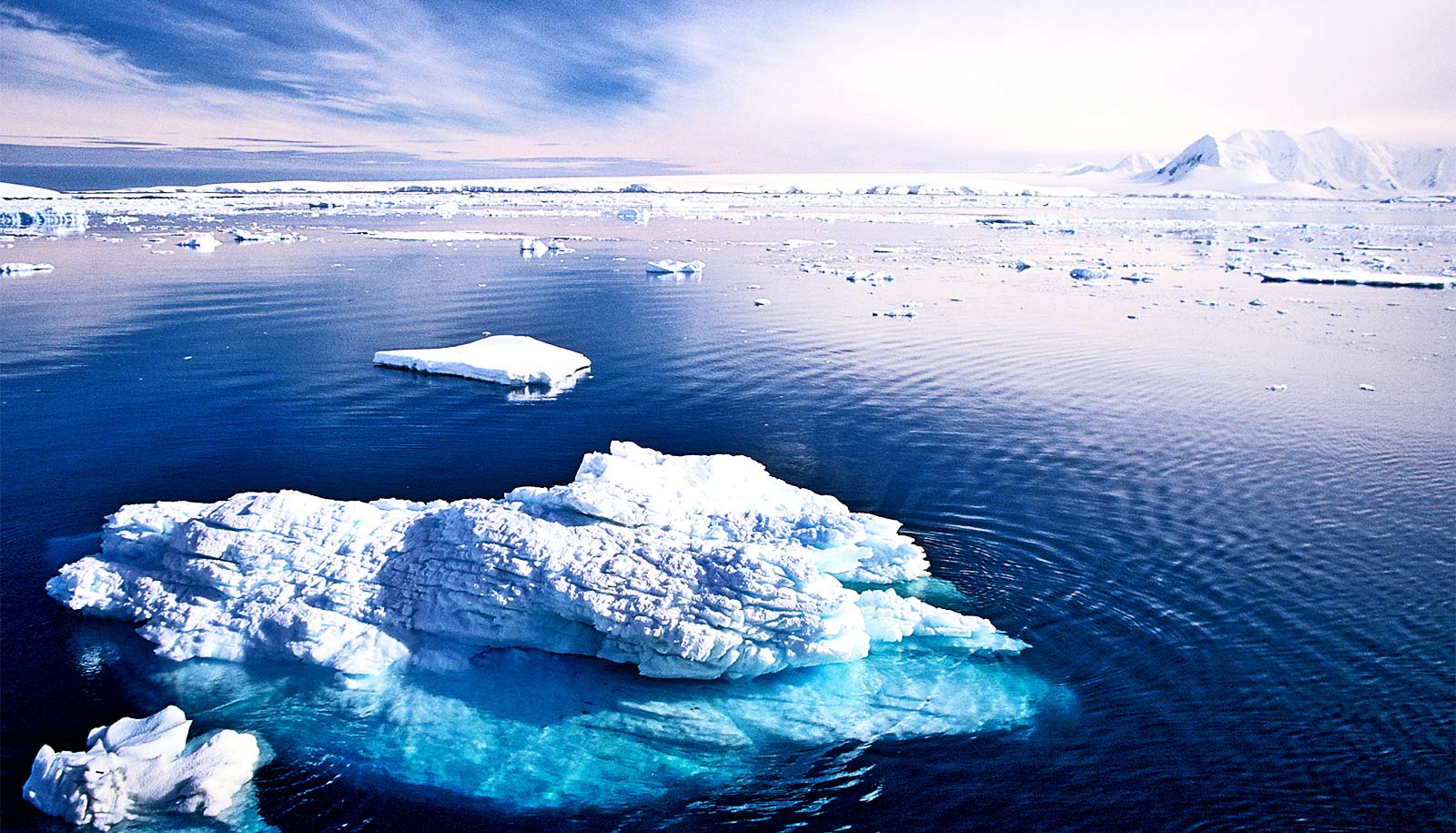
(Credit: Getty Images )
France-sized ice shelf moves suddenly once or twice daily
"We found that the whole shelf suddenly moves about 6 to 8 centimeters (or 3 inches) once or twice a day..."
The largest ice shelf in Antarctica lurches forward once or twice each day, researchers report.
In Antarctica, heavy glaciers are always on the move. Conveyor belts of ice known as ice streams are the corridors of faster flow that carry most of the vast glaciers’ ice and sediment debris out toward the ocean.
One such ice stream jostles the entire Ross Ice Shelf out of place at least once daily, according to the new research.
This finding is significant because of the scale of the Ross Ice Shelf: It is the largest ice shelf in Antarctica, about the same size as the country of France.
“We found that the whole shelf suddenly moves about 6 to 8 centimeters (or 3 inches) once or twice a day, triggered by a slip on an ice stream that flows into the ice shelf,” says Doug Wiens, a professor of earth, environmental, and planetary sciences at Washington University in St. Louis. “These sudden movements could potentially play a role in triggering icequakes and fractures in the ice shelf.”
The Ross Ice Shelf is a floating lip of ice that extends out over the ocean from inland glaciers.
Scientists are interested in interactions between ice shelves and ice streams in part because they are concerned about the stability of Antarctica’s ice shelves in a warming world.
Ice shelves act as brakes for glaciers and ice streams, slowing their journey to the sea where they melt, thus allowing more ice to accumulate on the continent. If an ice shelf collapses , this support disappears and the glaciers are free to flow faster. Once they flow into the ocean, they contribute to sea level rise.
The new study in Geophysical Research Letters focuses on movement triggered by the Whillans Ice Stream, one of about a half-dozen of the large, fast-moving rivers of ice pouring into the Ross Ice Shelf.
“One would not detect the movement just by feeling it,” Wiens says. “The movement occurs over a time period of several minutes, so it is not perceptible without instrumentation. That’s why the movement has not been detected until now, even though people have been walking and camping on the Ross Ice Shelf since the time of the great explorers Robert F. Scott and Roald Amundsen.”
The movement of the Ross Ice Shelf is triggered by a relatively sudden—in glacial terms—movement of the ice stream called a slip event. It is somewhat similar to the “stick-slip” that occurs along a fault before and during an earthquake.
Under the scenario that Wiens and his team observed, a large section of the Whillans Ice Stream, measuring more than 100 km by 100 km (about 62 miles by 62 miles), remains stationary while the rest of the ice stream creeps forward. Then, once or twice per day, the large section lurches forward against the Ross Ice Shelf.
It can move as much as 40 cm (16 inches) in a few minutes, Wiens says.
Studies of ice streams over the past 50 years show some ice streams speeding up, others slowing down. Scientists can use seismographs to detect sudden motion of the ice streams to help understand what controls this motion. Wiens and his team traveled to Antarctica in 2014 to place the seismographs used in this study.
“I’ve published several papers about the Whillans Ice Stream slip events in the past, but had not discovered that the whole Ross Ice Shelf also moves until now,” Wiens says.
The researchers do not think that these slip events are directly related to human-caused global warming. One theory is that they are caused by loss of water in the bed of the Whillans Ice Stream, making it more “sticky.”
The stress and strains associated with slip events is similar to the stress and strain observed to trigger icequakes under different conditions.
“At this point, icequakes and fractures are just part of the normal life of the ice shelf,” Wiens says. “There is a worry that the Ross Ice Shelf will someday disintegrate, since other smaller and thinner ice shelves have done so. We also know that the Ross Ice Shelf disintegrated during the last interglacial period—about 120,000 years ago—and that caused rapid ice loss to the other glaciers and ice streams feeding into it.”
Source: Washington University in St. Louis
The post France-sized ice shelf moves suddenly once or twice daily appeared first on Futurity .
Share this article:
This article uses material from the Futurity article, and is licenced under a CC BY-SA 4.0 International License. Images, videos and audio are available under their respective licenses.
Related Articles:
One part of the ocean actually cooled down over time
May 11, 2020 • futurityIce sheets ‘talk’ to each other across the planet
Nov. 30, 2020 • futurityLinks/images:
- https://www.futurity.org/doomsday-glacier-instability-2897242/
- https://www.futurity.org/west-antarctica-ice-sheet-2865262-2/
- https://doi.org/10.1029/2023GL108040
- https://www.futurity.org/ice-sheets-sea-level-antarctica-greenland-2356392-2/
- https://source.wustl.edu/2024/03/largest-ice-shelf-in-antarctica-lurches-forward-once-or-twice-each-day/
- https://www.futurity.org/ross-ice-shelf-antarctica-3201232-2/
- https://www.futurity.org


